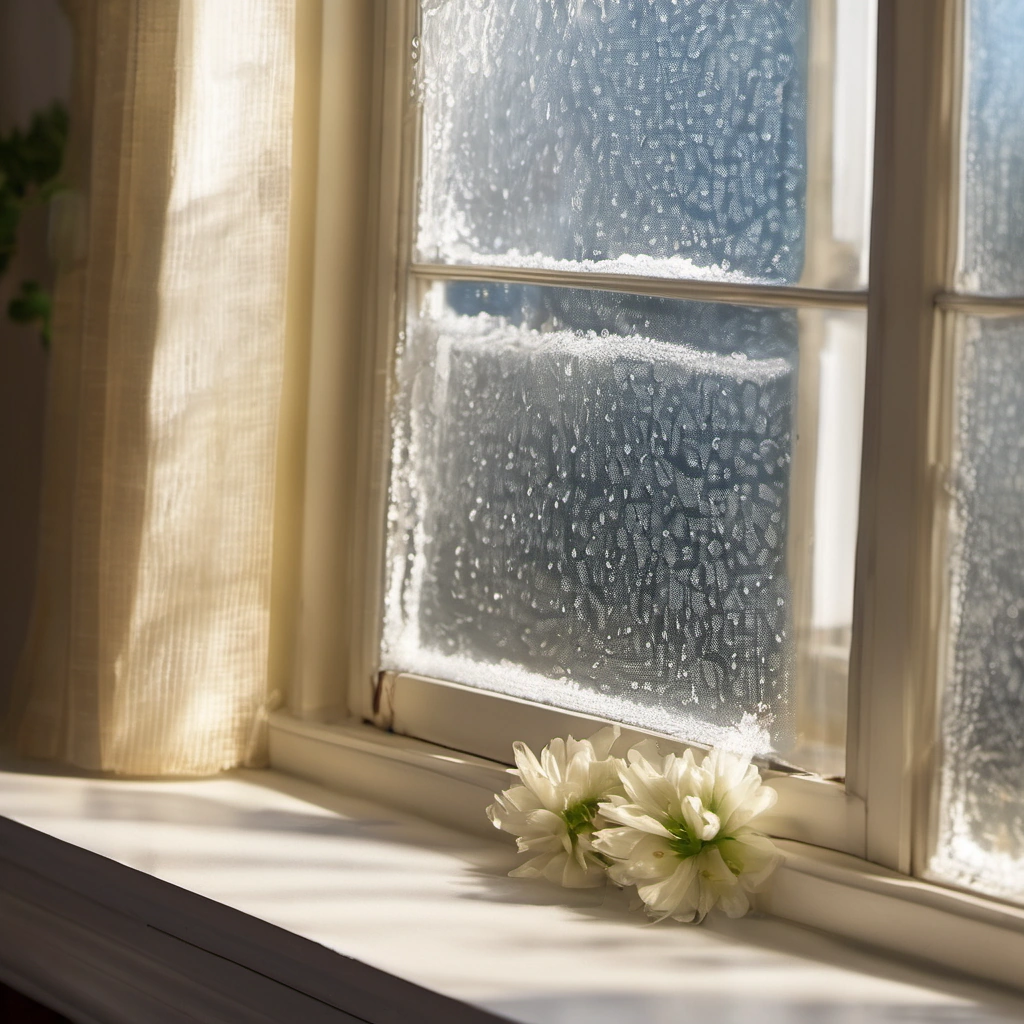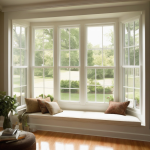Window Condensation: A Homeowner’s Guide to Identifying, Preventing, and Eliminating Moisture Problems
Understanding Window Condensation: A Clear View to a Healthier Home
Window condensation, that unwelcome film of moisture clinging to your glass, is more than just an aesthetic nuisance; it’s a critical indicator of your home’s overall health and energy efficiency. Think of it as your house whispering warnings about potential imbalances in humidity, ventilation, or insulation. While a fleeting bit of condensation on windows might seem benign after a hot shower, persistent window moisture signals a deeper issue that demands attention. Ignoring this visual cue can lead to a cascade of problems, ranging from unsightly window mold and deteriorating window frames to significant health risks for you and your family.
Addressing window condensation promptly is a crucial aspect of responsible home maintenance, protecting both your investment and your well-being. This comprehensive guide aims to empower you with the knowledge and practical strategies necessary to identify, prevent window condensation, and, if necessary, fix window condensation issues effectively. We’ll delve into the underlying science that governs condensation on windows, exploring the interplay of temperature, humidity, and air pressure. We’ll also examine the common culprits behind excessive home humidity, such as inadequate window ventilation, leaky window seal failure, and everyday activities that contribute to moisture buildup.
By understanding these factors, you’ll be better equipped to implement targeted solutions and create a healthier, more comfortable living environment. Furthermore, we’ll provide actionable steps to manage home humidity and improve window ventilation, including simple DIY fixes and more advanced home improvement strategies. From deploying dehumidifiers and exhaust fans to strategically opening windows and upgrading to energy-efficient models, we’ll cover a range of options to suit different budgets and needs. In cases of irreparable window seal failure or extensive window mold, we’ll also discuss when window repair or even window replacement becomes the most prudent course of action. Our goal is to equip you with the insights needed to make informed decisions and ensure your home remains a dry, healthy, and energy-efficient haven.
The Science of Condensation: Surface, Seal Failure, and Hidden Threats
To effectively combat window condensation, it’s crucial to understand the science behind it. Condensation occurs when warm, moist air comes into contact with a cold surface. The air cools, and it can no longer hold as much moisture, causing the excess water vapor to condense into liquid form. However, not all condensation on windows is created equal. There are three main types, each signaling a different underlying issue and demanding a tailored approach to resolution.
Understanding these distinctions is the first step in preventing further damage and ensuring a healthy, energy-efficient home. Addressing window moisture promptly can save homeowners significant costs in the long run, preventing issues such as mold growth and structural damage. Ignoring the signs can lead to more extensive home repairs. Surface condensation is the most common type, occurring on the interior surface of the window. It’s usually caused by high humidity levels inside the home and cold outdoor temperatures.
Visual cues include a film of moisture or water droplets on the glass. Look for it especially in bathrooms and kitchens, where steam from showers and cooking readily increases home humidity. Simple solutions like running exhaust fans or opening windows can often alleviate this issue. However, if surface condensation persists despite these measures, it may indicate a more systemic problem, such as inadequate window ventilation or a need to address overall home humidity levels. According to the EPA, maintaining indoor humidity between 30-50% can significantly reduce condensation and improve indoor air quality.
Condensation between panes, indicating window seal failure, is a more serious problem. If you see condensation between the panes of a double- or triple-paned window, the window’s seal has likely failed. This allows moist air to penetrate the space between the glass layers. The window’s insulating properties are compromised, and you’ll need to consider window repair or window replacement. This is often obvious as you can see the moisture in the middle of the glass. “Once a window seal is broken, the insulating gas escapes, and the window’s energy efficiency plummets,” explains Tom Silva, a home improvement expert. “Repairing the seal is often not a viable option, making replacement the most cost-effective long-term solution.” Replacing windows with energy-efficient models can also lead to significant savings on heating and cooling bills.
Condensation within the wall cavity is the most concerning type, as it’s hidden from plain sight. It occurs when moisture penetrates the wall cavity around the window, potentially leading to window mold growth and structural damage. Signs might include water stains on walls around the window, peeling paint, or a musty odor. This type often requires professional inspection to properly assess the damage. Addressing this issue promptly is crucial to prevent extensive structural repairs and potential health hazards associated with mold. Furthermore, all of these types of window condensation will increase the need for air conditioning, making it a major issue for energy efficiency. Homeowners should regularly inspect their windows and surrounding areas for signs of moisture to prevent costly repairs down the line.
Common Causes: Humidity, Temperature, and Window Weaknesses
Several factors contribute to window condensation. Identifying the root cause is the first step to finding a solution. Here are some common culprits: High Humidity Levels: Excessive moisture in the air is a primary driver of condensation on windows. Everyday activities like showering, cooking, and even breathing contribute to indoor home humidity. Poor ventilation exacerbates the problem, allowing moisture to linger and condense on cold surfaces. Think of a steamy bathroom after a hot shower – without proper ventilation, that moisture has nowhere to go but to condense on the mirror and, of course, the window.
Addressing high humidity is crucial to prevent window condensation. Temperature Differences: Significant temperature differences between the inside and outside of your home create the ideal conditions for condensation on windows. The colder the window surface, the more likely window moisture will form. This is because cold air holds less moisture than warm air. Single-pane windows, in particular, are notorious for this issue, as they offer minimal insulation against the outside temperature. The greater the temperature differential, the more pronounced the condensation will be.
Poor Ventilation: Inadequate window ventilation traps moisture inside, increasing humidity levels. This is especially problematic in bathrooms, kitchens, and laundry rooms. Without proper airflow, moisture generated from daily activities accumulates, leading to condensation. Consider installing or upgrading exhaust fans in these high-moisture areas to effectively remove humid air and fix window condensation problems before they start. A dehumidifier can also be a valuable tool in reducing overall home humidity. Window Construction: Single-pane windows offer little insulation, making them prone to condensation.
Older windows may also have compromised seals, leading to window seal failure, allowing air and moisture to leak through. This not only contributes to condensation but also reduces energy efficiency. In areas with TESDA policies focusing on building trades, proper window installation is emphasized to mitigate these issues. When window repair is no longer sufficient, old house maintenance, including window replacement with energy-efficient, double- or triple-pane windows can significantly reduce condensation and improve overall home comfort. If left untreated, window mold can develop, further exacerbating the problem.
Air Leaks and Thermal Bridges: Beyond the window itself, air leaks around the window frame and thermal bridges in the surrounding wall can contribute to condensation. Air leaks allow cold outside air to penetrate the wall cavity, cooling the surfaces around the window. Thermal bridges, often found in poorly insulated areas, create pathways for heat to escape, resulting in cold spots where condensation can form. Addressing these issues through proper sealing and insulation is essential for comprehensive window condensation prevention.
Actionable Solutions: Ventilation, Humidity Control, and Window Upgrades
Preventing window condensation requires a multi-pronged approach, focusing on managing home humidity, improving window ventilation, and upgrading your windows when necessary. Successfully addressing window moisture issues not only enhances your home’s comfort but also protects its structural integrity and promotes better indoor air quality. Each strategy plays a vital role in creating a balanced and healthy living environment. Improve window ventilation by consistently using exhaust fans in bathrooms and kitchens while showering and cooking to expel moist air directly outside.
Opening windows strategically, even for short periods, can dramatically improve air circulation and reduce condensation on windows when weather permits. For a more comprehensive solution, consider installing a whole-house window ventilation system. These systems ensure a continuous exchange of stale, humid air with fresh, dry air, preventing window condensation throughout the entire home. This is especially crucial in tightly sealed modern homes where natural air exchange is limited. Manage home humidity levels diligently to prevent window condensation.
Employ a dehumidifier, particularly during humid months, to maintain an ideal indoor humidity level between 30% and 50%. Regularly check and address leaky plumbing and dripping faucets, as even minor leaks can significantly contribute to overall home humidity. Consider investing in a humidity monitor to track indoor humidity levels and make informed adjustments. Addressing home humidity at its source is a proactive step in preventing window mold and other moisture-related problems. Upgrade windows to energy-efficient, double- or triple-pane windows with low-E coatings to significantly reduce condensation on windows.
These advanced window designs provide superior insulation, maintaining a warmer glass surface temperature and minimizing the temperature difference that leads to condensation. While window replacement represents a larger investment, the long-term benefits in terms of energy savings, comfort, and reduced window moisture make it a worthwhile consideration, especially if you are experiencing window seal failure. This also reduces the need for window repair. Seal air leaks around windows and doors meticulously to prevent drafts and moisture infiltration.
Use high-quality caulk or weather stripping to create a tight, airtight seal, effectively blocking external humidity from entering your home. Regularly inspect seals for wear and tear and promptly address any cracks or gaps. Sealing air leaks is a cost-effective measure that not only helps prevent window condensation but also improves overall energy efficiency. Consider applying window films designed to regulate glass temperature. These films can help maintain a more consistent surface temperature on the glass, reducing the likelihood of condensation forming. While not a complete solution, window films can be a useful supplementary measure, particularly in areas prone to high humidity or with older windows. They offer a relatively inexpensive way to mitigate window condensation issues.
Health Risks, Property Damage, and When to Call a Pro
Prolonged window condensation can have significant consequences that extend far beyond mere aesthetic concerns, impacting both your health and the structural integrity of your property. The most immediate threat is often window mold. The persistent window moisture creates an ideal breeding ground for mold spores, leading to colonies that can release allergens and mycotoxins into your home’s air. According to the EPA, mold exposure can trigger a range of health issues, from allergic reactions like sneezing and skin rashes to more severe respiratory problems, particularly for individuals with asthma or compromised immune systems.
Addressing window condensation promptly is therefore not just a matter of home maintenance, but a crucial step in safeguarding your family’s well-being. Beyond the health risks, unchecked condensation on windows can inflict substantial damage on your home. Wooden window frames and surrounding structures are particularly vulnerable to wood rot, a destructive process fueled by persistent moisture. As the wood decays, it loses its structural integrity, potentially leading to costly repairs involving replacing entire window units or even sections of walls.
Furthermore, excessive window moisture can seep into drywall, causing it to crumble and stain, and damage wallpaper, leading to peeling and discoloration. Preventing window condensation is therefore essential for preserving the value and longevity of your home’s building materials. Home humidity levels play a crucial role in condensation, and managing it proactively can save significant repair costs down the line. Knowing when to seek professional help is crucial in addressing window condensation effectively. Window seal failure is a common culprit behind condensation between the panes of double- or triple-paned windows.
This indicates that the insulating gas has leaked out, rendering the window less energy-efficient and more prone to condensation. In such cases, window repair or window replacement is often the only viable solution. Similarly, if you observe signs of structural damage, such as water stains, peeling paint, or soft, rotting wood around your windows, it’s imperative to consult a qualified contractor. They can assess the extent of the damage, address any underlying issues, and recommend appropriate window ventilation solutions to prevent future problems. Addressing these issues promptly can prevent minor problems from escalating into major, expensive repairs. Ignoring window condensation can lead to significant long-term costs, making timely intervention a wise investment in your home’s health and value.


